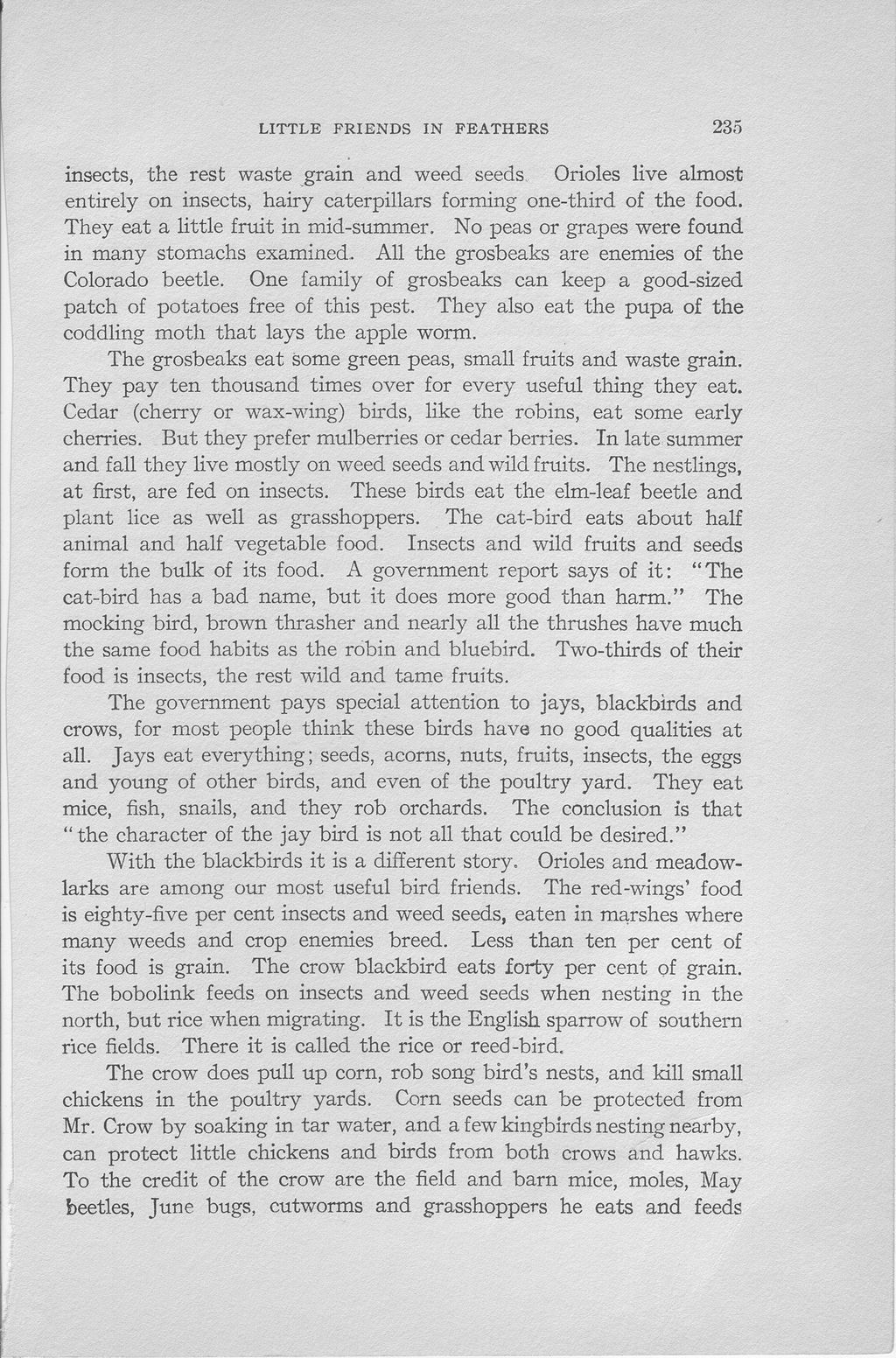insects, the rest waste grain and weed seeds Orioles live almost entirely on insects, hairy caterpillars forming one-third of the food. They eat a little fruit in mid-summer. No peas or grapes were found in many stomachs examined. All the grosbeaks are enemies of the Colorado beetle. One family of grosbeaks can keep a good-sized patch of potatoes free of this pest. They also eat the pupa of the coddling moth that lays the apple worm.
The grosbeaks eat some green peas, small fruits and waste grain. They pay ten thousand times over for every useful thing they eat. Cedar (cherry or wax-wing) birds, like the robins, eat some early cherries. But they prefer mulberries or cedar berries. In late summer and fall they live mostly on weed seeds and wild fruits. The nestlings, at first, are fed on insects. These birds eat the elm-leaf beetle and plant lice as well as grasshoppers. The cat-bird eats about half animal and half vegetable food. Insects and wild fruits and seeds form the bulk of its food. A government report says of it: "The cat-bird has a bad name, but it does more good than harm." The mocking bird, brown thrasher and nearly all the thrushes have much the same food habits as the robin and bluebird. Two-thirds of their food is insects, the rest wild and tame fruits.
The government pays special attention to jays, blackbirds and crows, for most people think these birds have no good qualities at all. Jays eat everything; seeds, acorns, nuts, fruits, insects, the eggs and young of other birds, and even of the poultry yard. They eat mice, fish, snails, and they rob orchards. The conclusion is that "the character of the jay bird is not all that could be desired."
With the blackbirds it is a different story. Orioles and meadow-larks are among our most useful bird friends. The red-wings' food is eighty-five per cent insects and weed seeds, eaten in marshes where many weeds and crop enemies breed. Less than ten per cent of its food is grain. The crow blackbird eats forty per cent of grain. The bobolink feeds on insects and weed seeds when nesting in the north, but rice when migrating. It is the English sparrow of southern rice fields. There it is called the rice or reed-bird.
The crow does pull up corn, rob song bird's nests, and kill small chickens in the poultry yards. Corn seeds can be protected from Mr. Crow by soaking in tar water, and a few kingbirds nesting nearby, can protect little chickens and birds from both crows and hawks. To the credit of the crow are the field and barn mice, moles, May beetles, June bugs, cutworms and grasshoppers he eats and feeds
